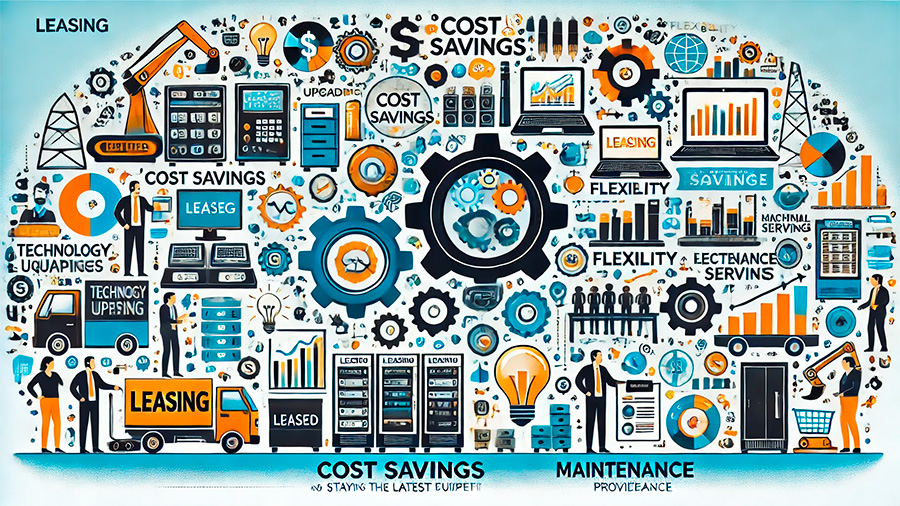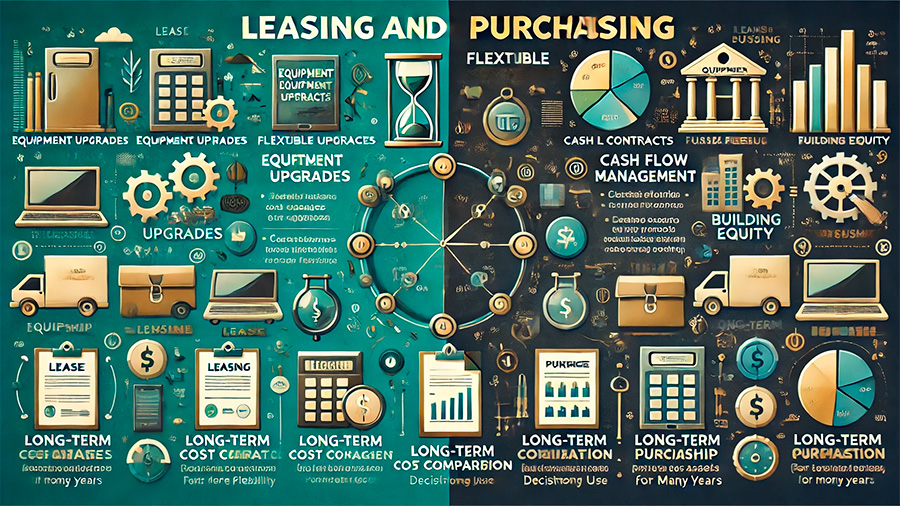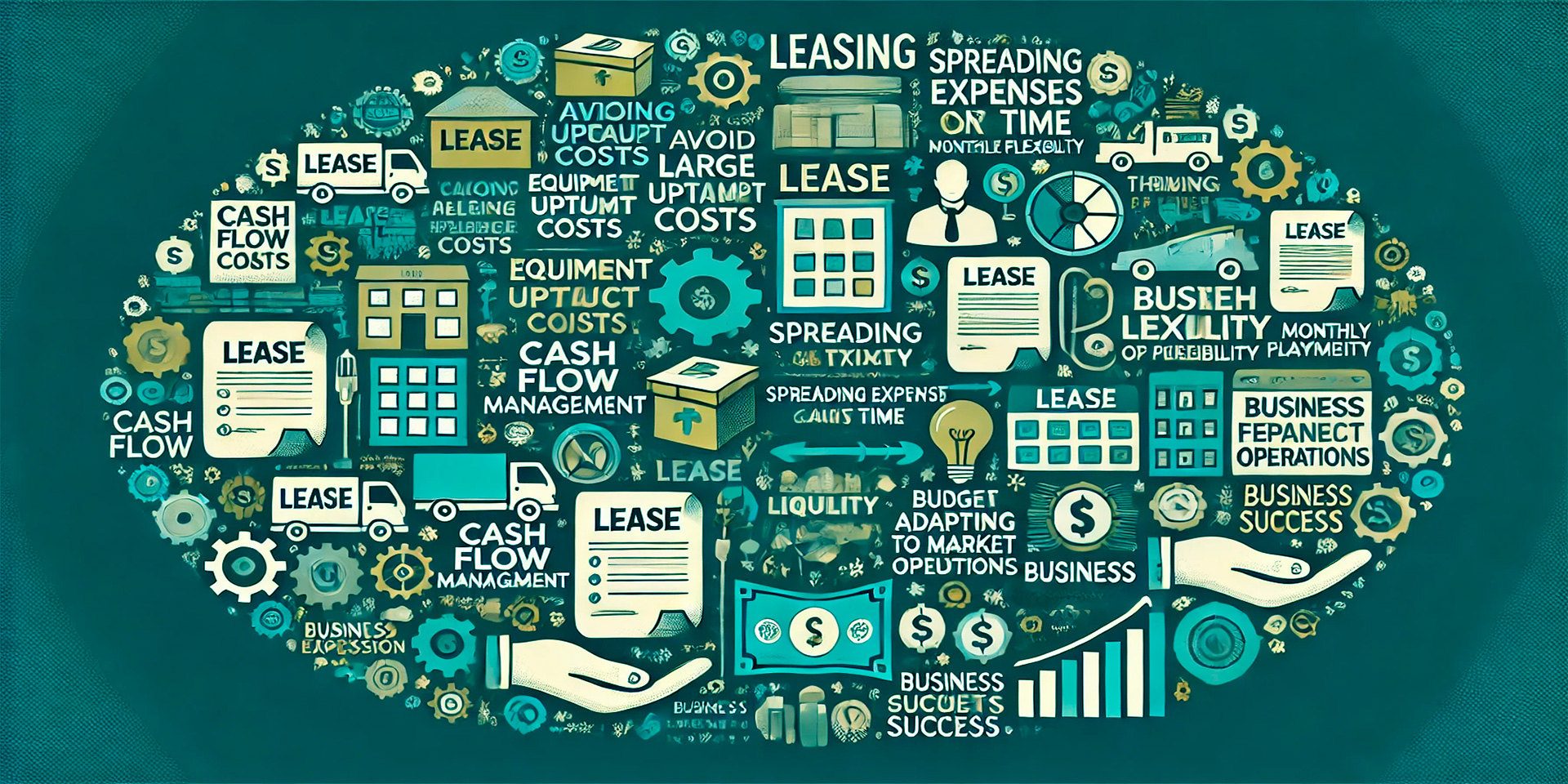Leasing offers businesses a way to reduce financial strain and maintain flexibility by avoiding the large upfront costs associated with purchasing equipment or property outright. Instead of committing a significant amount of capital at once, leasing allows businesses to spread the expense over time, making it easier to manage cash flow and allocate resources where they are most needed.
For many businesses, especially those that are growing or dealing with tight budgets, the ability to lease provides a much-needed financial cushion. By not locking up cash in purchases, companies can maintain liquidity, invest in other critical areas of their operations, and adapt to changing market conditions. Leasing gives businesses access to the tools and equipment they need to succeed without requiring them to sacrifice other opportunities.
Improving Cash Flow and Financial Flexibility
One of the main reasons businesses choose to lease is the positive impact it has on cash flow. Purchasing expensive equipment, machinery, or property can drain a company’s cash reserves, leaving little room for other investments or day-to-day operational needs. Leasing eliminates this pressure by spreading the cost over a fixed period, often through manageable monthly payments.
This financial flexibility is crucial for businesses that want to grow but need to preserve cash for other important purposes, such as hiring new employees, expanding marketing efforts, or investing in product development. Rather than tying up a significant amount of capital in one purchase, leasing allows companies to allocate their funds more effectively and remain nimble in their decision-making.
Additionally, leasing often comes with the benefit of predictable costs. Fixed monthly payments mean businesses can plan their budgets with greater accuracy, helping them avoid unexpected financial setbacks. This predictability is especially valuable in industries where revenue can fluctuate, as it enables businesses to maintain stability and keep up with their lease obligations even during slower periods.

Access to Up-to-Date Equipment and Technology
Leasing not only helps businesses save money but also ensures that they have access to the latest equipment and technology. In industries where technological advancements occur rapidly, owning equipment that quickly becomes outdated can be a costly burden. Leasing provides businesses with the option to upgrade to newer models or technology at the end of the lease term, ensuring they remain competitive without needing to make a significant financial investment in purchasing new equipment.
For example, a company that leases computers or machinery can easily upgrade to the latest version once the lease expires, without worrying about the depreciation of the previous equipment. This ability to continuously access up-to-date tools keeps businesses on the cutting edge, improving efficiency and productivity while avoiding the financial risks associated with owning outdated assets.
In addition, leasing agreements often include maintenance and repair services as part of the contract. This means businesses don’t have to bear the full cost of repairs or downtime, further reducing operational expenses. The lessor is responsible for ensuring the leased equipment is in good working condition, saving businesses the hassle and cost of maintaining or replacing equipment themselves.
Tax Benefits of Leasing
Another way leasing can save businesses money is through tax advantages. In many cases, lease payments are considered an operating expense, which means they can be deducted from taxable income. This provides an immediate financial benefit, as businesses can lower their tax liability by deducting the cost of the lease.
The ability to deduct lease payments as an expense is especially beneficial for companies that would otherwise have to spread out the tax benefits of ownership over the life of the asset through depreciation. Leasing offers a more immediate financial advantage by reducing the taxable income in the same year the lease payments are made.
It’s important to note that the tax benefits of leasing can vary depending on the specific type of lease and the country’s tax regulations. Businesses should consult with a tax advisor to fully understand how leasing could impact their tax situation and to ensure they are making the most financially sound decision.

Leasing vs. Purchasing: Making the Right Choice
Deciding whether to lease or purchase equipment depends on several factors, including the company’s financial goals, the nature of the assets in question, and the expected duration of use. For businesses that need access to equipment for only a short period or prefer the flexibility to upgrade frequently, leasing can be the more cost-effective and practical option.
On the other hand, purchasing may make more sense for businesses that plan to use an asset for many years and want to build equity through ownership. However, even in these cases, leasing can still provide significant benefits, such as improved cash flow and reduced maintenance costs, making it a valuable consideration for many businesses.
When comparing leasing and purchasing, it’s essential to weigh the long-term costs and benefits. While leasing might result in higher total costs over time, the immediate financial flexibility and access to up-to-date equipment can outweigh the potential savings of owning the asset outright.
Conclusion
Leasing offers businesses a way to save money by reducing upfront costs, improving cash flow management, and providing access to the latest technology. The flexibility that leasing provides allows companies to invest in other key areas of their operations, ensuring continued growth and competitiveness. With additional benefits such as tax deductions and reduced maintenance responsibilities, leasing can be an attractive option for businesses looking to optimize their financial resources. While there are circumstances where purchasing might be the better choice, leasing’s advantages often make it a valuable strategy for maintaining both financial stability and operational flexibility.

